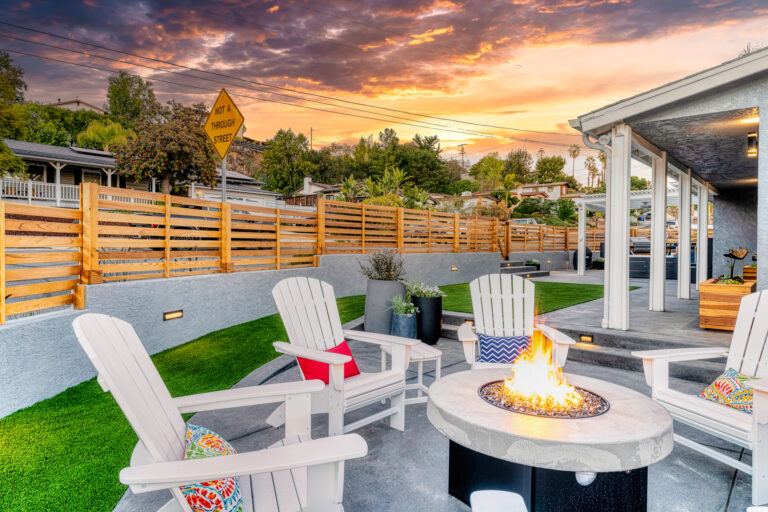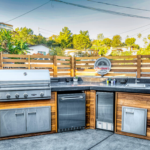Who doesn’t want to surround himself with luscious greenery that meets ambient architecture? This beautiful symbiosis of nature and human intervention is what we call landscaping, where plants and rock formations meet expert masonry to form a pleasant environment.
Fostering Creativity: The Vital Role of Imagination
Just take a moment and imagine it. You are sitting in your new and improved back yard, outdoor fireplace is crackling, and your little stream is gently ripples
. Maybe dinner is on the grill, smoking away as you’re developing your appetite. The forget-me-nots are blooming finally, and any remnant of the weedy and messy garden you once had is now covered in flowerbeds, tuff-filled walkways, and terraces. Sounds good, doesn’t it? Now let’s show you how to get there.
People of all walks of life participate in landscaping, in different levels and capacities. From setting up a little terrace topped with a vibrant flowerbed, to bulldozing an entire yard and adorning it with paths, decks, and various elements.
From local rocks and domestic plants to specially imported minerals and exotic vegetation. All you need to do is work with a budget, and you can get the most for your money.
But not everyone has a good enough understanding of horticulture to succeed at landscaping, and some may not have the physical capacity for some of the laborious tasks it may entail.
Like many fields, landscaping too is an expert one. That’s not to say it can’t be done as a hobby, but to achieve truly great results in a reasonable timeframe, one must typically turn to a professional.
If you want to get your garden started on the right foot, you should try and envision want your garden to look like. Generally speaking, you would want a spacious, well lit, and private yard that is both beautiful and practical.
Think walkways with flowerbed along each side, rather than flowers everywhere and a tortuous path winding throughout. Remember, your garden should look nice, but more importantly, it should be practical, accessible, and it should make sense.
Additionally, if you have a good view or lake access, try not to block is off. The key is to accommodate what is naturally there already, assuming it is of use and aesthetic. for instance, if there is a boulder in your yard, perhaps you could carve it into a table, seat, bar, or even a flower bed.
Next, go to your local nursery and try to get an understanding of what kind of flora would work for you. Try and speak with people in the shop to get an expert opinion, as well as tips and tricks on how to maintain your garden properly.
You would be surprised to know how big a difference the little things make. Every plant is different, they all require different amounts of sunlight, water, and vitamins in the soil.
Another thing to consider is timelessness and longevity. Ideally, you should choose design which transcend temporary trends, but rather adhere to a timeless standard of beauty.
That standard maybe be hard to pin down or even follow, so it would be unreasonable to expect complete adherence to it. Rather, it should be used as a guideline while planning your garden, yard, or any other outdoor space.
Say for example you want to build a terrace and you have two choices or stone to use: a classic natural limestone or a trendy hexagonal brick.
It would be wiser to use the limestone as to not be stuck with a tacky out-of-fashion terrace when the popularity of the hexagonal brick subsides.
OK, so you have a plan laid out and a design in mind. Next you will probably want to look into materials to use. Materials come in many shapes, sizes, and price points and may differ in availability.
From tuff to soot, through wood and stone. Prices may vary according to location, season, or even supply shortages. All these factors should be accounted for when planning your next project.
After you have chosen your materials in accordance with your budget, you can make the transition to the executive part.
The next part is the most burdensome, laborious, and frustrating. With that being said, it is also the most rewarding. This is when you start really bending down and working. Dragging large stones, hauling big bags of tuff and gravel, and utilizing your hoe and shovel.
Make sure you take the necessary safety precautions. Wear hard-toe boots when carrying heavy objects, use a mask when spray painting or using other harsh chemicals, and drink plenty of water.
If possible, have someone help you. Not only will it make the job easier, but it you can be there for each other if anything were to go wrong.
If you made it this far, here’s a tip for you. When doing anything the involves paints, grout, or anything else that can make a mess, try working from the top down.
This way, you’re accounting for gravity and its effect on the substances in use. Paint the top of a wall first, then plant the plants below, for example.
Like many things in life, good landscaping can be bought. Many companies specialize in different aspects of landscaping, while other are more of a one stop shop.
If you’re not up for doing it yourself, you should know what other options you have. Additionally, going to a professional might actually be cheaper.
Many companies buy materials in bulk and are more skilled and better staffed. All these things can drive the price and hours spent down to a point where it doesn’t make much sense doing it alone.
For all the hobbyists, this might be one of the most fun, challenging and rewarding hobbies there are. But maybe the rest of us should stick to the pros.
is a do-it-yourself out door fire place really worth the work and the risk of messing up? To most it’s worth the money it costs to pay a professional. Remember, timelessness and longevity.







